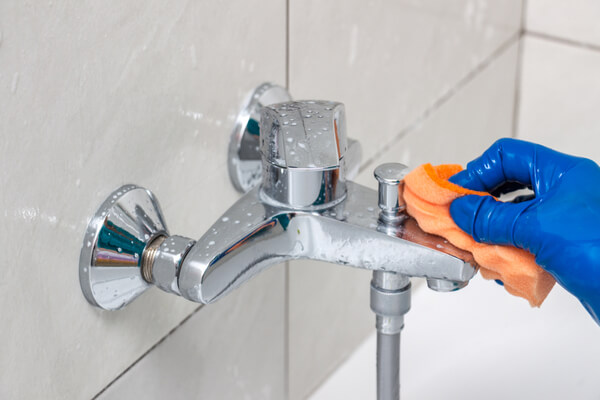What Lack of Sleep Does to Your Eyes?
Getting less than five hours of sleep every night is bad for your eyes. A good night’s sleep helps the eye function properly, and if you don’t get enough, you might be susceptible to eye spasms. This condition, known as a myokymia, is a common side effect of lack of sleep. Luckily, these spasms are not painful and will not affect your vision.
Ischemic Optic Neuropathy
Lack of sleep can contribute to the development of ischemic optic neuropathy (NA-AION). This is an inflammatory disease of the medium to large blood vessels of the eye, which results in decreased blood flow to the optic nerve. When it occurs, people may experience blurriness or even loss of vision in one eye. Lack of sleep may also result in transient ischemic attacks, which usually occur before ischemic optic neuropathy develops.
An ophthalmologist will perform an eye exam to determine if there is damage to the optic nerve. The ophthalmologist will test the eye by dilating it and looking at the optic nerve. The doctor may also test the visual field and side vision. Blood work may also be necessary to diagnose the condition. This directory can assist you with all problems of your eyes.
Dry Eye
Dry eye patients with poor sleep quality may be more likely to develop more severe symptoms. Insufficient sleep also impairs the quality and quantity of tears. Fortunately, there are some home remedies and medications available that can help manage dry eye at night. Listed below are some of them.
Sleep deprivation may impair the ability of the cornea to repair itself. This can lead to dry eye and other symptoms, such as pain, itching, and blurred vision. In severe cases, this condition may result in blindness or vision loss. Fortunately, most people with a sleep deficiency do not experience these severe conditions. In addition to dry eye, a lack of sleep may also contribute to the onset of puffy eyes, which are common symptoms of poor sleep.
Cataracts
Lack of sleep is a factor that may lead to cataract development. In one study, scientists observed that those with a lack of sleep were more likely to develop cataracts. In another study, a lack of sleep was a factor in the development of nuclear cataracts. However, researchers have not established a causal relationship between cataracts and sleep.
The primary symptoms of cataracts include cloudy or blurred vision. Although cataracts are relatively harmless, advanced cataracts can be harmful to the eyes. They may affect the center of the lens, causing nearsightedness and difficulty with reading. If the cataract progresses, the lens will begin to yellow and cloud, and people may find it hard to distinguish different shades of color.
Central Serous Retinopathy
Central serous retinopathy caused by insufficient sleep can be difficult to diagnose. It may take several visits to the doctor in order to confirm the diagnosis. To diagnose the condition, the doctor will perform a full dilated eye examination on both eyes and will also take retinal images. One type of scan that can help the doctor diagnose central serous retinopathy is called optical coherence tomography (OCT). This type of scan allows the physician to look at the retina at a microscopic level. It can also help identify retinal scarring and minuscule pockets of fluid.
Symptoms of central serous retinopathy can include blurred vision, blind spots, and a lack of focus. This condition can result in loss of vision and could be life-threatening if not treated promptly. This is why early diagnosis is critical. It can also lead to a faster recovery and a lower risk of permanent vision loss.
Dark Circles
Lack of sleep is one of the most common causes of dark circles around the eyes. Sleep deprivation can cause the skin under the eye to become dull, which can accentuate dark circles. In addition, lack of sleep can cause blood vessels to become exposed beneath the skin. Also, your lower eyelids can become swollen and puffy, which can also cause shadows to appear under the eye.
A cold compress can help constrict blood vessels and reduce dark circles. Another effective remedy for puffy eyes is placing cucumber slices on your eyes before bed. Cucumbers have high water content, which can soothe tired eyes. They also contain silica, a mineral essential for the formation of healthy tissue. Tea bags may also help reduce dark circles because they have antioxidant properties and stimulate blood circulation around the eyes.
Bags Under the Eye
One of the most common side effects of sleep deprivation is under-eye bags. This is caused by the blood vessels in your eyelids being dilated from lack of sleep. Since the skin around the eyes is so thin, these dilated blood vessels will appear as dark circles under your eyes.
There are many causes of under-eye puffiness. Lack of sleep, chronic stress, and poor diet can all lead to bags under the eye. Other factors include allergies, thyroid disease, connective tissue disease, and infections. Those with allergies may have more serious problems with bags under the eye.
How to Remove Calcium Build-Up in Pipes
If you’re tired of smelling soapy water from the drain, there are several easy ways to remove calcium buildup in pipes. These methods may require a few tools. For example, you’ll need hydrochloric acid, baking soda, vinegar, and a wire brush or sponge. And make sure to wear gloves.
White Vinegar Dissolves Calcium
Calcium deposits can cause plumbing appliances to run less efficiently, and white vinegar can help eliminate this problem. A white vinegar solution can also dissolve the build-up in shower drains. To do this, close the water valve and pour baking soda and vinegar into the drain. Let the mixture sit for three to four hours to eliminate the calcium build-up.
Calcium, also known as limescale, is easily dissolved by acid. It is not common in copper pipes, as the concentration must be high for it to cause damage. You can also try using a water softening system, which replaces the hard minerals in your water with softer minerals. PEX pipes, short for cross-linked polyethylene, are more resistant to the build-up of limescale than metal pipes.
White vinegar can also be used as a cleaning agent. In a spray bottle, you can use the acid in vinegar to remove calcium buildup. To use it on your pipes, use a cloth or rubber gloves. Also, keep an extra toothbrush handy to wipe off the calcium deposits.
Baking Soda Adds Abrasiveness
Baking soda is an environmentally-friendly cleaner with a wide range of industrial applications. Its mild abrasiveness helps remove grease, soap, and dirt without scratching. Its crystalline structure creates mild alkalinity, transforming fatty acids in dirt and grease into harmless carbon dioxide. It also serves as a leavening agent in baked goods, releasing carbon dioxide gas during baking.
If you’re looking for a homemade solution to remove calcium buildup from pipes, baking soda is an excellent choice. This powder can be diluted with warm water and will slough off the build-up and soften the mineral deposits. You can also use baking soda to clean porous tile and grout.
Another option is to use a mixture of baking soda and vinegar. This mixture can remove calcium deposits from pipes and other surfaces. The vinegar and baking soda mixture should be mixed thoroughly, and you should wear rubber gloves while mixing the solution.
Using a Pipe Snake
Pipe snakes can be a useful tool in cleaning minor clogs in the pipes. This flexible plastic tool is designed to travel down the pipes, breaking down the build-up and increasing water flow. A coil at the end of the snake is used to catch debris and pull it out. The handle is turned counter-clockwise to remove the clogged pipe.
Pipes that are filled with calcium build-up can cause slow-draining fixtures, weak flushing toilets, and poor water pressure in the house. Calcium is the main mineral found in hard water and coats the inside of water pipes and drains, reducing their internal diameter and reducing their efficiency. The build-up can also lower the water pressure in the house and decrease the volume and efficiency of your water heater.
If you notice white deposits on your dishes and fixtures, it is likely that you have a build-up of calcium in your pipes. The amount of build-up will depend on the type of pipes in your home. However, you can remove the calcium build-up using home remedies and drain cleaners.
Cleaning Your Toilet Bowl Prevents the Build-up
Cleaning your toilet bowl regularly will help prevent the buildup of calcium deposits in your pipes. This buildup can cause cloudy water and slow flushing. To avoid this buildup, you should clean your toilet bowl at least once a week. Make sure to clean under the rim of your toilet as well. Leaving calcium in this area can cause your pipes to break down and cause unpleasant odors. Deep cleaning your toilet tank is also beneficial, as it will prevent clogs, thereby ensuring long-lasting pipe performance.
If you do not have a plunger or a plumbing machine, you can also buy a plumbers cloth or pumice stone at a hardware store. To avoid damaging the pipes, avoid using too much pressure while cleaning the bowl. Commercial cleaners are also available and are specially formulated to remove calcium build-up from toilets. However, these cleaners typically contain acid solutions that can be harmful to kids and pets. You should wear gloves if you use these cleaners. Also, remember to let the cleaning solution sit for several minutes before flushing the toilet again. Or you may contact The Plumber Guys, an expert in all plumbing services in the United States.
One of the most common causes of calcium build-up in the pipes is mineral-rich water. This type of water contains calcium and magnesium. Although hard water doesn’t damage the plumbing, the minerals accumulate around the water line in the toilet bowl over time. As they accumulate, they can become stubborn and harder to remove. Luckily, it’s possible to prevent this build-up from forming in your pipes by cleaning your toilet bowl regularly.

